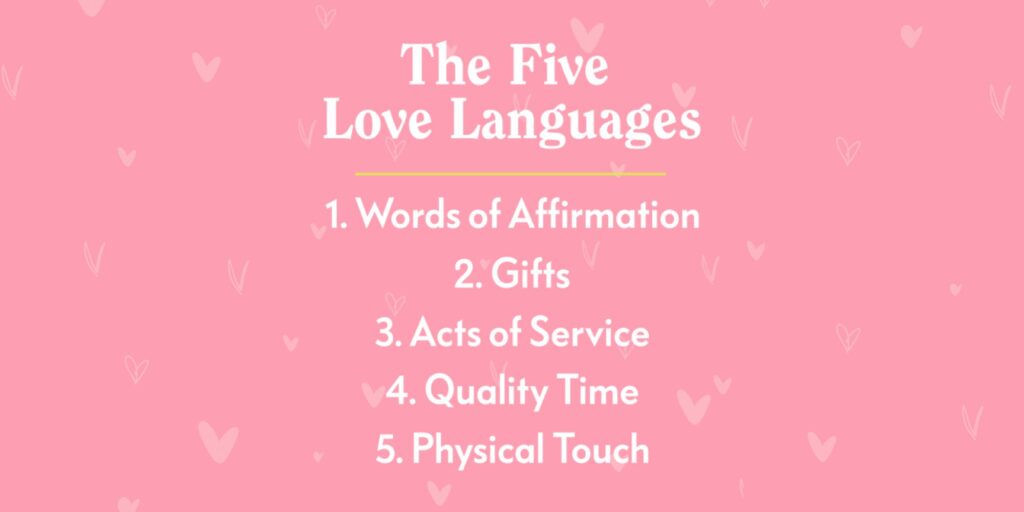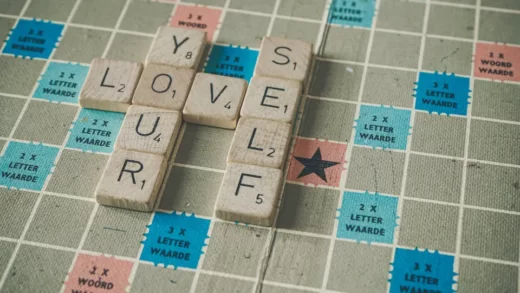Understanding the love language of your partner could improve your relationship. You should be aware of the following information regarding the five love languages.
Even if you show your partner affection frequently, do you really take the time to make sure you’re communicating it in the way they want to hear it? When two partners have different love languages, even love can occasionally be lost in translation.
Here is a look at the five languages and how they can be used and improved — even during a pandemic.
What Are the 5 Love Languages?
The five love languages are words of affirmation, spending time together, receiving gifts, performing deeds of service, and physical touch.
Words of Affirmation
People with words of affirmation as a love language value verbal acknowledgments of affection, including frequent “I love you’s,” compliments, words of appreciation, verbal encouragement, and often frequent digital communication like texting and social media engagement.
Quality Time
When their partner actively wants to spend time with them and is always down to hang out, people whose love language is quality time feel the most adored. They adore it when the relationship prioritizes qualities like attentive listening, eye contact, and total presence.
Physical Touch
A person who uses physical touch as their preferred form of communication experiences love through physical affection. In addition to having sex, they experience feelings of love when their partner gives them a massage at the end of the day, holds their hand or touches their arm.
A good movie and cuddling on the couch while enjoying a glass of wine might be this person’s idea of the ideal date. Their only physical desire is to be near their partner.
Acts of Service
Acts of service are nice things you do for your partner that make them feel loved and appreciated, such as:
- Helping with the dishes
- Running errands
- Vacuuming
- Putting gas in the car
Your partner will notice and appreciate the little things you do for them if their preferred love language is acts of service. They frequently show kindness and service to others.
Receiving Gifts

Gift-giving is a sign of love and affection for someone who uses and understands this love language. They value the gift itself as well as the time and effort the giver invested in it.
People who consider receiving gifts to be a part of their primary love language do not necessarily demand expensive or large gifts; rather, it is the thought and effort that went into the gift that matters.
It shows them that you are genuinely interested in them when you take the time to choose a gift just for them. Because it has such an impact on them, those who use this love language frequently remember every little gift they have received from their loved ones.
How Do Love Languages Benefit Relationships?
All of us have different ways of giving and receiving love. Your relationship may be significantly impacted by discovering and appreciating those differences. One of the easiest ways to strengthen your relationships, in Chapman’s opinion, is to do this. Here are some additional benefits of understanding your individual love languages.
Love Languages Promote Selflessness
You put their needs ahead of your own when you make a commitment to learning someone else’s love language. This is the fundamental tenet of Chapman’s theory.
Instead of trying to persuade their partner to learn their love language, couples should work to understand each other. Ideally, both parties would like to show their love in a way that is special to the other.
To understand how to love your partner in a way that is meaningful to them, you and your partner should first explore your different love languages.
Love Languages Create Empathy
You develop empathy for your partner as you gain knowledge about their experience of love. It enables you to temporarily put yourself aside and consider what makes someone else feel important and loved.
Couples who make a commitment to using love languages develop their emotional intelligence and learn how to prioritize the needs of others over their own. They learn to communicate in a language that their partner can understand rather than using their own love language.
Love Languages Help Maintain Intimacy
You can increase understanding—and ultimately intimacy—in your relationship by regularly discussing the things that keep you feeling loved. You’ll get to know one another better and develop stronger, more meaningful connections as a result. Your connection feels closer when this occurs.
Love Languages Aid Personal Growth
Personal development can result from focusing on something or someone other than yourself. You are forced to develop and change as a result of loving your partner in ways that are outside of your comfort zone.
Love Languages Help You Share Love in Meaningful Ways
The things that partners do for one another become more deliberate and meaningful when they begin using each other’s love language. They are saying “I love you” in ways that make sense to their partners, who then feel noticed, content, and appreciated.
How to Date With Each Type of Love Language?
If you put in the necessary effort, learning your partner’s love language can be a life-changing experience. It invites inquiry rather than mind-reading into the relationship.
Your partner may value quality time and touch more than you do, despite the fact that you both may love words of affirmation. You might think you’re great at expressing love if you send him romantic texts all day in an effort to make contact.
He might be wondering why you never want to spend time with him cuddling on the couch at night, and he might be feeling unloved as a result.
See how resentment and disconnect are simple to enter the picture? It can be simpler to give each other what we innately crave if we can identify our primary and secondary love languages.

Here are some tips for dating people with each type of love language:
- Words of affirmation: Picking the right words is important because they have so much meaning. Communication will improve if you err on the side of optimism. Say the good things out loud and often when you notice them. Avoid being unconstructive in your criticism; words have power and leave an impression.
- Quality time: Make time for your relationship by intentionally carving it out of your schedule. It might just involve taking a walk outside together, which is an exciting pandemic activity and having a good, in-depth conversation about your day. Calls should be made from home.
- Acts of service: Take extraordinary measures to demonstrate your love for someone. Ask them directly what they need; don’t always make it about chores because everyone’s definition of this love language is different. Be watchful and think of ways you can make their lives easier. These seemingly insignificant deeds add up and can have a significant impact.
- Gifts: The important days should be noted on the calendar, and you should honor the day and your partner with a thoughtful gift so that they will remember them. Win extra Brownie points with a “just because” gift. It could be as easy as giving them a flower you picked yourself from the garden or a cute keychain from a place you love to travel. Those modest acts can greatly enhance the celebration of the relationship.
- Touch: Physical affection and loving touches are essential. This love language is refreshingly simple, simple to satisfy, and doesn’t take much effort, planning, or money. Squeezing their arm while you’re watching a movie or tapping their butt as you pass them by are simple ways to make eye contact and establish a connection.
The Bottom Line: Love Languages in Everyday Life
Knowing each other’s love languages is advantageous for both of you. But it can be challenging to speak your partner’s love language, especially if it differs from your own. Always keep in mind that successful relationships take time and effort to develop.
However, they shouldn’t be the end-all and be-all of happiness. Love languages are a useful tool to help us communicate and express ourselves to one another. Instead, it ought to serve as a springboard for a journey toward a deeper connection and improved self-control between partners. But the effort shouldn’t end there.
















